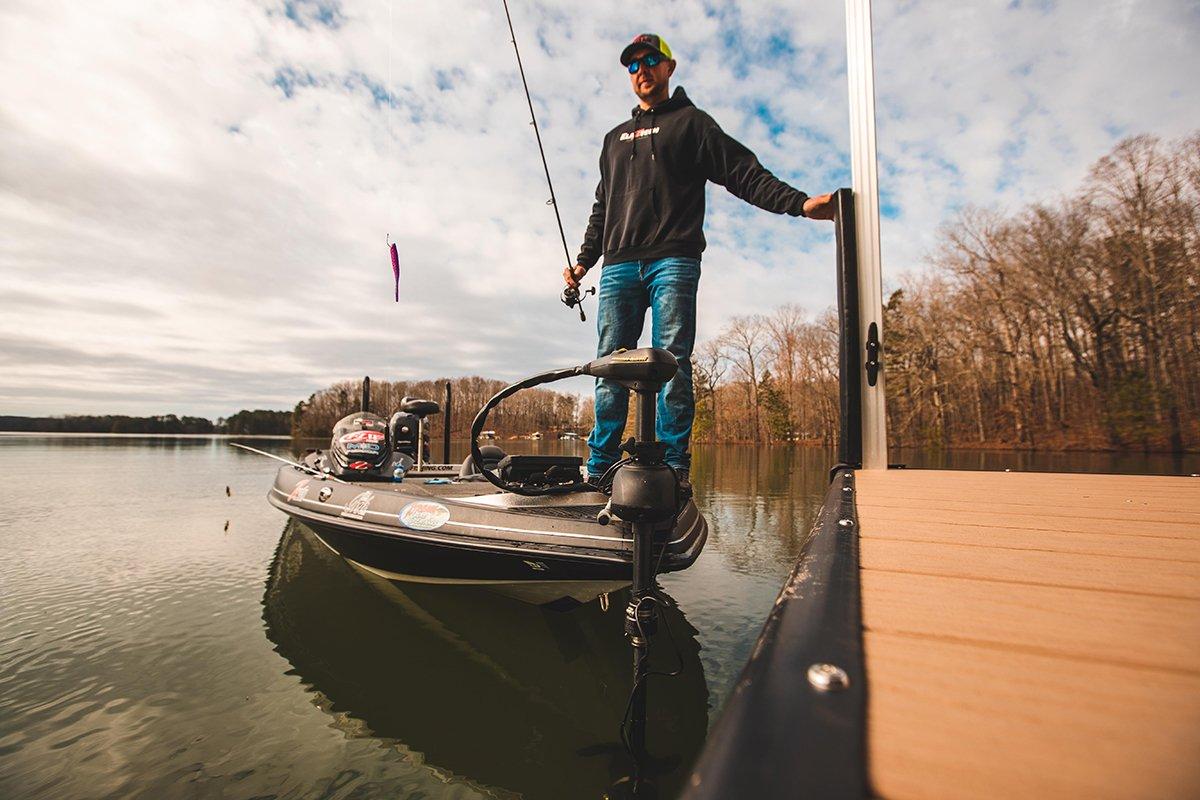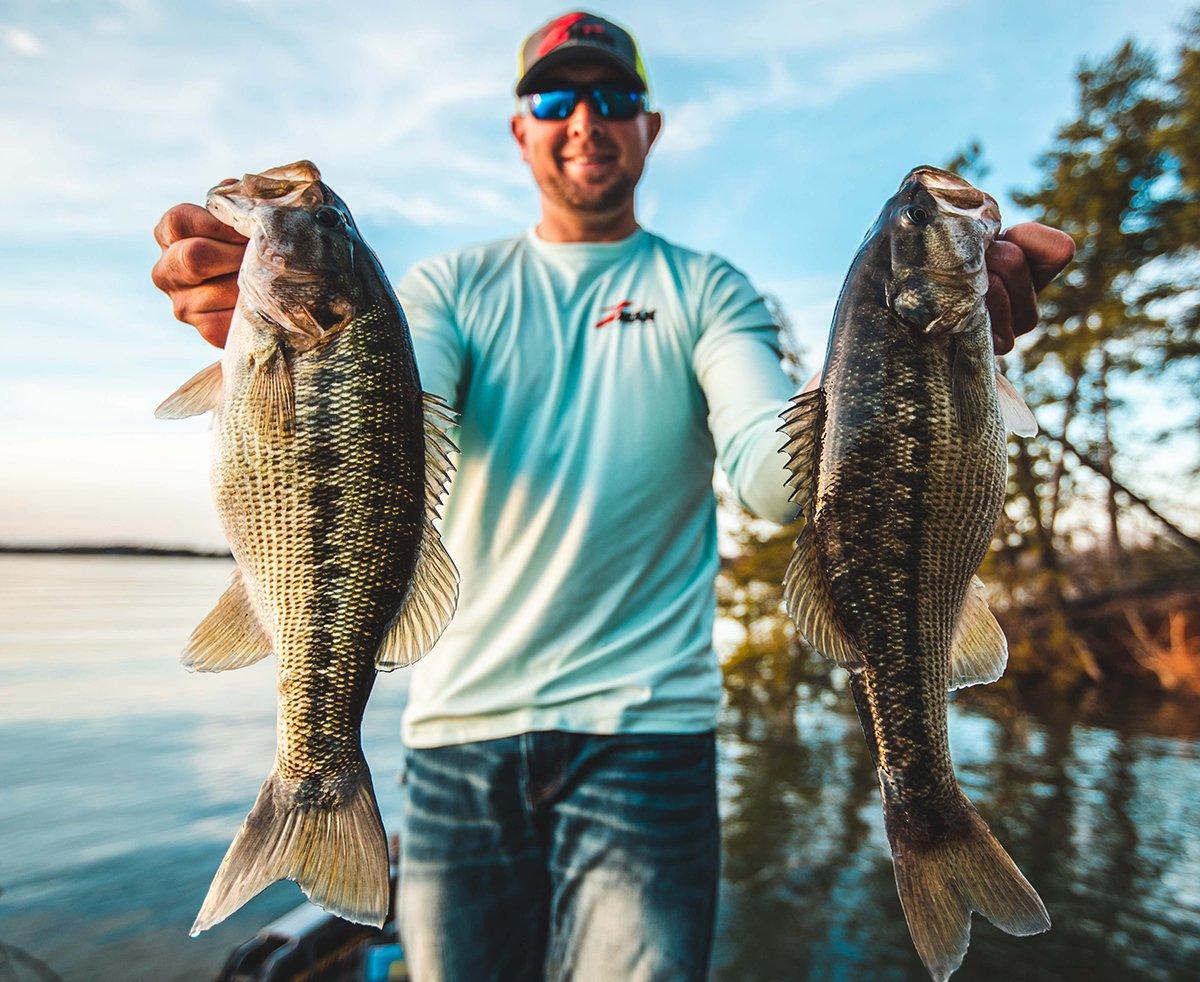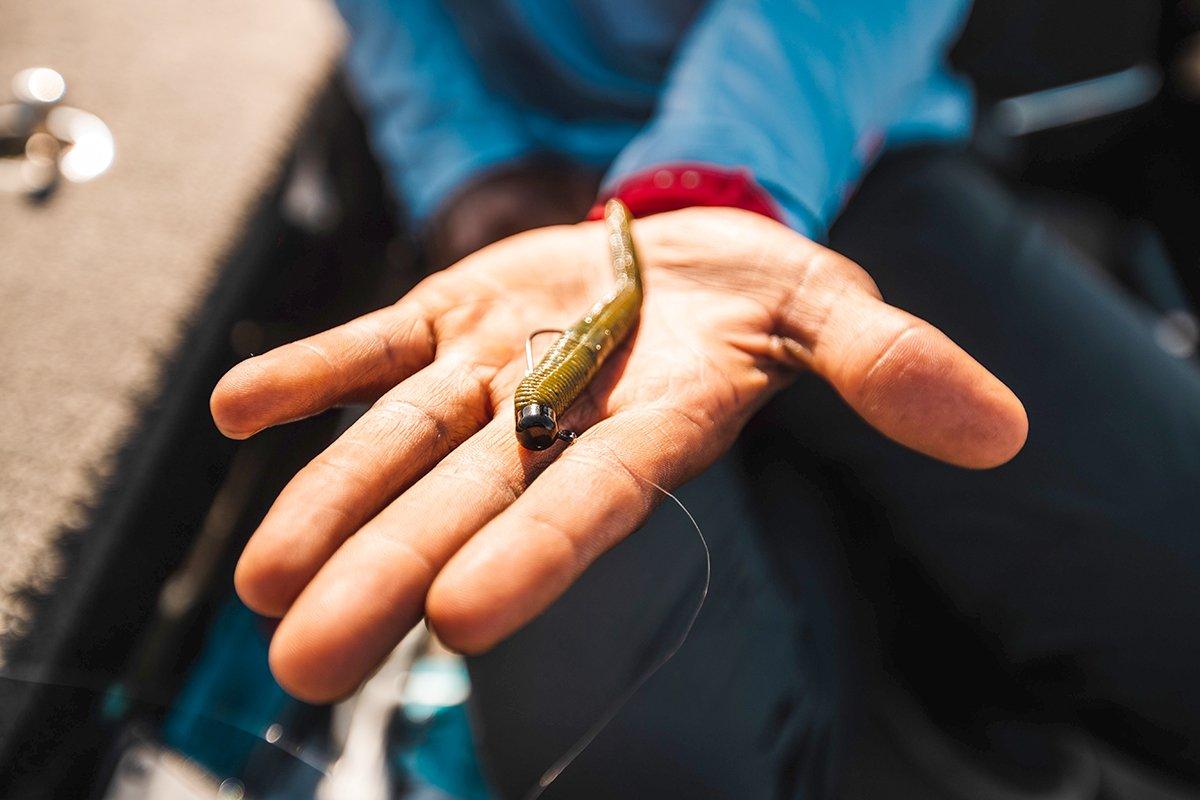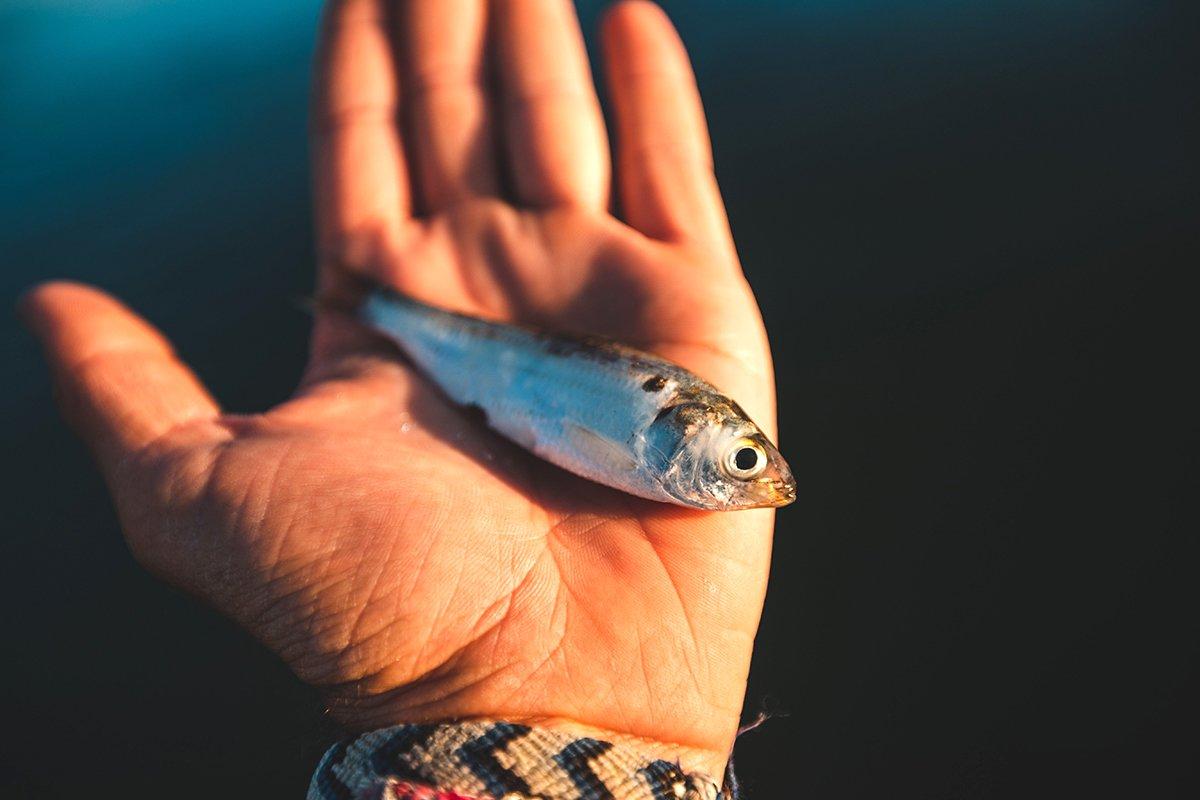These man-made structures can offer the best bass fishing on the lake, and the patterns are predictable, too
Bass love cover. Whether it's for the purpose of ambushing prey or hiding from predators, largemouth and spotted bass are object-oriented fish.
Problem is, not all bass lakes are full of thick weeds or downed trees. In fact, many aging reservoirs around the country are nearly devoid of their once-bassy shorelines.
Development around the lake is often to blame, yet, with the development often comes a five-star bass hangout: boat docks.
Boat docks offer outstanding cover for bass, and you can find them on most large bodies of water. They provide shade necessary for hunting, frequently offer a shallow-to-deep water transition area, conceal bass from predators, and attract baitfish, bluegills, and crappies for bass to eat. Fishing around these structures may give you the best shot at a big bass.
There's more to it than just slinging a lure around the nearest dock, though. First, let's investigate the types of docks you're likely to come across in your area and how they differ. Then we'll get the scoop on how to fish docks from a master.
Floaters or Fixed? Platforms or Piers?
In much of the Southeast and West, floating boat docks prevail. These structures are most prevalent on reservoirs with large water-level fluctuations. By design, floating boat docks adjust to water levels, and are usually held to the shoreline by long cables extending to the end of the dock. They can be constructed of a number of materials, including even concrete. Some use simple pontoons or drums to stay upright. Occasionally, smaller versions, like those used as parking platforms for jet-skis and small watercraft, are available. These are frequently made of plastic cubes.
Floating docks can be over any depth of water, in any part of the lake. This makes them especially attractive as bass can find a comfortable zone throughout the year.
Boaters often simply tie up to their home floating dock. But some use extravagant boat houses and lifts designed to float as well.
In natural lakes with stable water levels, fixed docks are the norm. Often termed piers, fixed docks are the best structure in many bass lakes around the Midwest and Northeast. Technically, even duck blinds fall into this fishing category on the famous tidal fisheries out East.
Fixed docks have support posts driven from the platform into the bottom. They are frequently made of wood, but aluminum has regional followings in places where the piers must be removed at ice-up. Here, again, some boat owners tie up, while others install boat lifts or racks offering more supports, poles, and anchor points.
(Don't Miss: Best Lures for Crappie Fishing: Jigs vs. Minnows)
Seasonal Locations
With this basic understanding of boat-dock construction, you can likely pick out the most prevalent on your home lake. From here, let's discuss the best places to find bass, as fishing all the docks on some lakes would take a lifetime.
Think in terms of season. Winter finds bass on bluff creek-channel banks, deep points, and the mouths of major coves. Look for docks that correspond to this - both in and over deep water, and around nearly vertical shorelines. Follow fish in the spring to the backs of bays and creeks, keying on docks there. You'll likely find bass there again in late fall, especially if baitfish are present. In summer, check those in moderately deep water or in areas of heavy weed growth. Docks block light and therefore weeds, making sloppy spots summertime gold.
A large portion of his nearly $3 million in earnings has been plucked from boat docks.
Fishing spot selected, it's time to get down to business.
(Don't Miss: Punching Match: Slop Fishing Tactics for Giant Bass)
The GOAT
Realtree fishing team member Andy Morgan has often been referred to as the greatest competitive bass angler of all time. A large portion of his nearly $3 million in earnings has been plucked from boat docks. While most pro anglers scramble to keep up with the latest technology and techniques, Morgan still hits the water the same way: on the hunt for docks.
It's my absolute favorite way to fish, Morgan conceded. It's often possible to pattern bass on any given lake based just on docks, and where [fish are] holding.
Morgan finds that certain zones on boat docks frequently hold the best fish, and those zones repeat themselves from dock to dock. The walkway leading out to the main platform, for example, can be hot when bass are shallow, or when shad are spawning (more on that in a minute). Frequently in summer, the deepest portion of the dock is productive, as is a shady boathouse.
In any case, Morgan finds that - perhaps more with docks than any other type of cover - bass will position the same on each target. This is likely due to the man-made factor of docks. Fisherman's bonus: Each dock on a body of water is often identical, positioning fish the same way.
Once Morgan determines the fertile ground, he skips from one dock to the next, concentrating only on the best spots. Why not fish the entire structure? Morgan finds it far more effective to make just a few casts to hundreds of docks, picking off bass as he goes.
(Don't Miss: Fishing Drop-Shot Rigs for Big Summer Bass)
Outfitting Correctly
Disclaimer: If you're new to dock fishing, you won't be as good as Andy Morgan. Not for a while. But by selecting the right gear, you can get up and running. Morgan utilizes 7 1/2-foot rods specifically designed for this type of fishing (by him, actually), offered by Favorite. He alternates between underhand swings and hard, side-arm skip casts. Baitcast reels are spooled with fluorocarbon lines from 16- to 20-pound test.
Quick tip: When learning to pitch and skip lures around boat docks, it's far easier to master using heavy monofilament line than it is braid. Start with 20-pound test.
Morgan specifically tunes his reels to allow line to easily flow, which lets him skip his lures up into productive nooks and crannies more efficiently. Much like watching masters of other crafts - say traditional archery or golf's short game - it's amazing to observe Morgan in action as he dissects a boat dock. Rarely does he miss a cast, and often his bait shoots 20 or more feet beneath a structure. Such can only be learned through repetition. Choosing the right lure also helps.
Bass jigs featuring an Arkie-style head excel at getting into the tough spots. The flat design skips like a stone. The key is to develop a sidearm cast, and throw with authority. Practice where there are no docks before going all in.
A half-ounce jig is the gold-standard. Tip it with a flat, chunk-style trailer. For more productive casts and to lessen your frustration, use a dab of super glue to hold your trailer on longer.
(Don't Miss: The 3 Best Lures for Catching a 10-Pound Bass)
Fishing Methods
Sometimes a jig is a jig, and thus should be fished accordingly. Bumping bottom never hurt anyone. Bass holding on docks, however, often suspend just below the surface, taking advantage of the shadows created. This is especially true of floating structures, where bass will sometimes hold a foot down over massively deep water. There, it's best to swim the jig.
After the cast or skip, keep your rod high and begin a pumping, swimming retrieve. Attempt to make the jig jump and the skirt pulse. Try dark bluegill-matching hues (Green Pumpkin) or shad colors. When a bass hits, drop the tip, reel fast, and hit him back. Once you've mastered the cadence, swimming a jig around boat docks is an effective way to target bass in any water depth.
Sometimes a jig just won't do, and other methods are better. Shakey-head worms - straight-tailed plastics rigged on light jigheads - are killers on clear lakes and anywhere spotted bass live. Weightless Senko-style stickbaits can be rigged a variety of ways and catch bass of all sizes and activity levels. Drop-shot rigs are real killers when bass get picky. All of these methods excel when cast on spinning rods, matching 10-pound braided line with a 12-pound fluoro leader.
(Don't Miss: Why You Suck at Throwing a Baitcaster)
Golden Opportunities
As I alluded to earlier, a few circumstances come up occasionally, turning docks into real honey holes. First, docks create voids in otherwise impenetrable vegetation, offering bass a perfect edge to ambush. And oftentimes, dock owners enhance their structures to make them more productive, sinking brushpiles and fish attractors near and beneath. Modern depthfinders can easily discern these areas, as can the presence of pole-holders and lights designed for night fishing.
In many areas, threadfin shad spawn all around docks, and just about every bass in the system follows suit. This occurs mostly at dawn. Dead giveaways are birds diving around shoreline seawalls, shad following your lures back to the boat, or massive explosions from huge bass engulfing everything in sight.
Morgan's approach here is with winding baits, including spinnerbaits and the Strike King Thunder Cricket - both in, not surprisingly, shad colors. Move early, as the spawn usually ends once the sun is high in the sky, forcing you to wait until tomorrow for another shot at the incredible action.
Have docks on your lake? If so, are you fishing around them? Don't wait any longer; you could be missing the best day of your fishing year. Practice up and pay attention. The bass will let you in on their secret.














